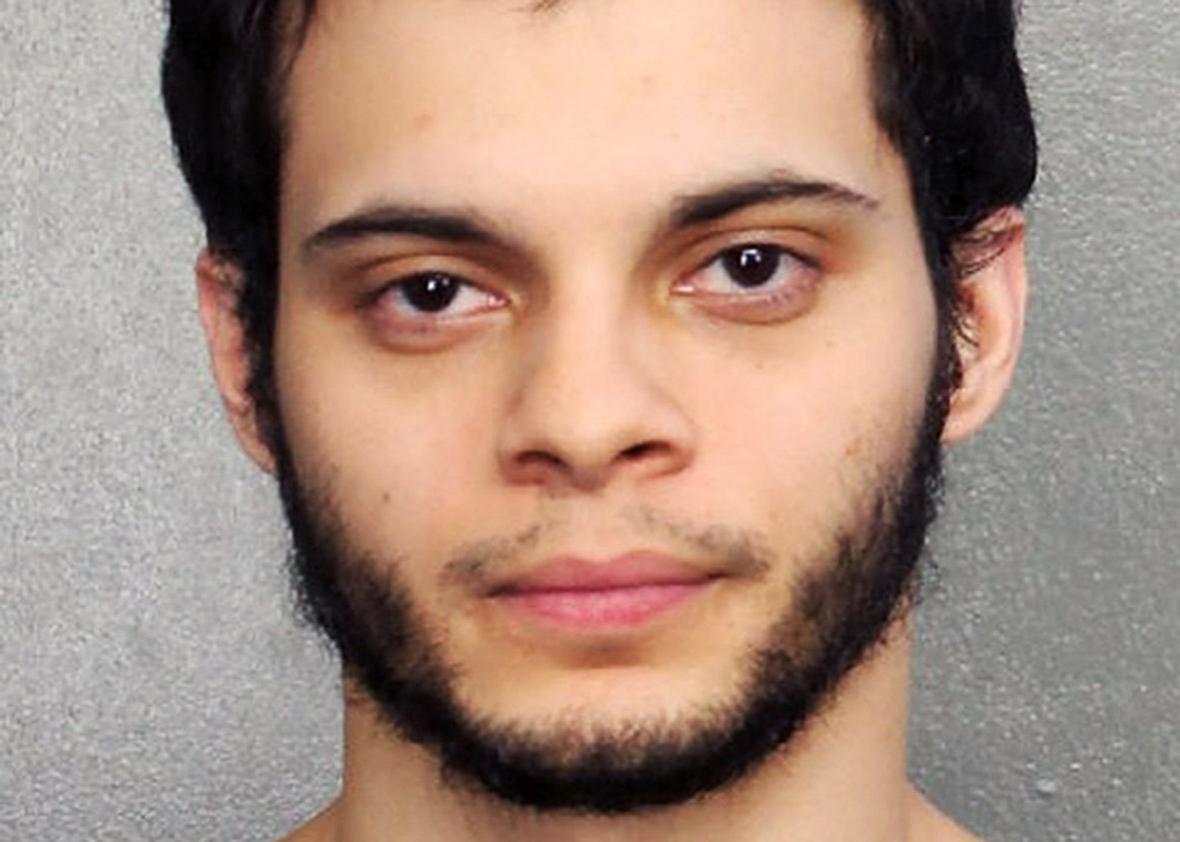In the year before he allegedly shot and killed five strangers in the Fort Lauderdale airport, 26-year-old Esteban Santiago had at least five encounters with police in Anchorage, Alaska, according to new reports. The incidents included two accusations that he had choked his girlfriend. The Anchorage Daily News reports that one of the encounters, last January, led to charges of assault and criminal mischief. In that incident, Santiago’s girlfriend called the police and said he was yelling at her and had tried to smash in her bathroom door. When an officer arrived, the door had been bashed off its frame, and the girlfriend said he had hit her and tried to strangle her.
One of the reasons mass shootings are so terrifying is that they seem to come out of nowhere. They can happen at any time of day, in any state, and in shopping centers, movie theaters, dance clubs, or airports. The victims can be anyone, and even the killer’s identity can feel arbitrary at first: The public has never heard his name or seen his face before he emerges from the crowd and starts shooting. That aura of total randomness is part of why these crimes grip the public imagination.
In fact, however, a history of domestic violence and aggression toward women is a remarkably common theme in the lives of men who become mass shooters. To name a few prominent examples:
- The ex-wife of Orlando shooter Omar Mateen said he beat her and held her hostage during their four-month marriage.
- Virginia Tech shooter Cho Seung-Hui had been investigated for stalking two female classmates.
- Elliot Rodger, who killed six people and injured 13 people in Isla Vista, California, in 2014, had tried to push women off a ledge at a party (not to mention publishing a manifesto on his “war on women”).
Those men are all shooters who became household names because they committed their crimes in public against strangers. But the more common type of mass shooting doesn’t make such splashy headlines. A 2015 analysis by the advocacy group Everytown for Gun Safety found that 57 percent of mass shootings—defined as incidents in which four or more people are killed, not including the shooter—in the previous six years featured a shooter killing his partner, ex, or another family member along with other victims.
In other words, most mass shootings are also incidences of domestic violence. As law professor Nancy Leong summed it up in Slate in 2014, “Men who engage in violence at home are often men who engage in violence outside the home.” She was writing soon after a man shot dead two New York police officers in their patrol car—hours after shooting his ex-girlfriend in the stomach. Even “traditional” domestic disputes, in which the offender doesn’t go out of his way to harm strangers, often draw other people into the orbit of violence. A 2016 analysis of on-duty police officer deaths found that more than 20 percent of those who died while responding to dispatcher calls or suspicious activity were killed during domestic disputes.
Strangulation, which Santiago was accused of, is a particularly well-established predictor of later acts of violence. Women who have been strangled in the past by their partners are seven times likelier than other women to later become murder victims. The Huffington Post’s Melissa Jeltsen, who has reliably reported on the connection between domestic violence and other violence, interviewed experts on strangulation who say the accusations against Santiago were a missed opportunity by prosecutors. Most states have made strangulation a felony-level offense within the last decade, but Santiago was charged only with misdemeanors. He was arrested again in February for violating the terms of his release, and in March prosecutors said they would drop the domestic violence charges if he attended anger-management classes and kept his nose clean for a year. Two months shy of that benchmark, he allegedly strode into Terminal 2 at the Fort Lauderdale-Hollywood International Airport with a gun. No one saw it coming.
